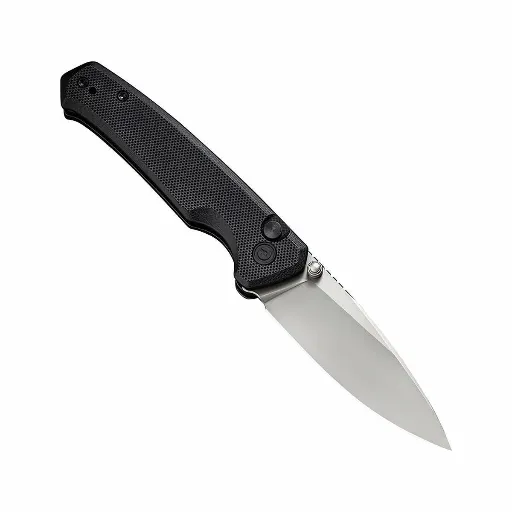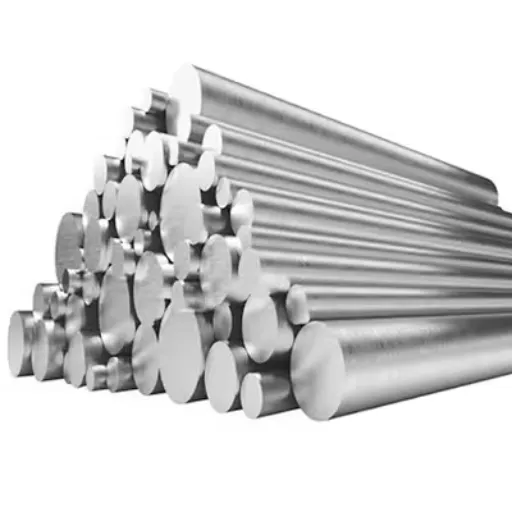Engineers in the shipbuilding industry need materials such as EH36 steel, which is flexible yet durable with a high tensile strength. In this blog, we will explain the unique traits that make EH36 steel It’s Practically Indestructible, look into its uses in contemporary shipbuilding, and delve into how it’s made. Furthermore, we will analyze how international regulations define its quality and the advantages of crafting dependable, high-performance vessels. The readers will have an overview of the necessity of EH36 steel in high-strength shipbuilding and why it is considered an advancement in maritime engineering, technology, and innovation.
What Are the Mechanical Properties of EH36 Steel?
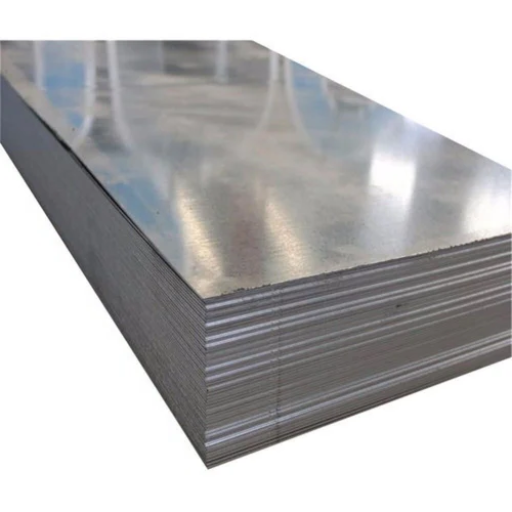
EH36 steel has exceptional mechanical properties, enabling it to be used in different classes of ships. It has a minimum yield strength of 355 MPa (megapascals) and a tensile strength between 490 and 620MDa, increasing its structural stability. This kind of steel has excellent impact toughness, especially at low temperatures, which makes it suitable for marine environments. In addition to these properties, its high ductility and good weldability permit the erection of robust ships. Mattew and Linsey, 2023 proposed that the flexibility in these attributes makes EH36 steel widely used in marine engineering.
Understanding the Yield Strength of EH36
The yield strength of EH36 steel is vital for marine applications; it refers to the ability to withstand stress and not suffer from any form of permanent damage. The material and steel’s yield strength of 355 MPa guarantees exceptional performance even under very harsh loads. This strength permits the material to withstand considerable stresses while maintaining the required structural integrity for shipbuilding and offshore structures. The yield strength, good weldability, and toughness render the material a dependable option for harsh marine engineering applications.
Examining the Tensile Strength of EH36 Steel Plate
The tensile strength of the EH36 extension steel plate is critical for marine engineering. Steel EH36 is noted for having a range of tensile strength of 490 to 620 MPa, making it capable of enduring significant pulling forces while remaining physically intact. This strength is vital for the durability and reliability of offshore structures and ships built in harsh environments. In addition, the combination of high tensile strength with high elongation capacity increases performance, making it very effective against mechanical and structural stresses and deformations during use. EH36’s strength and flexibility for demanding applications are well recognized from these parameters.
How Does EH36 Compare to Other Grades of Steel?
Compared to A36 or S235 steel grades, EH36 exhibits exceptional features such as enhanced toughness, high tensile strength, and high stiffness. It is classified as high-strength, low-alloy (HSLA) steel, primarily used for constructing ships and designing offshore platforms where reliability under extreme conditions is essential. A36 has a lower range of 400-550 MPa, while EH36 grade has a typical lower bound tensile strength of 490 MPa at minimum.
Besides, A36 and S235 steel grades have lower elongation, a mechanical property essential for maintaining structural integrity under applied stress over a definite period. Unlike A36 and S235 steel grades, which are sufficient for regular construction purposes such as building and other, EH36 is deliberately engineered to withstand extremes of heavy mechanical loads, harsh climate, and subzero temperatures whilst meeting a minimum Charpy V-notch impact test requirement of -40 degree Celsius.
Technical parameters for comparison are as follows:
| Property | EH36 | A36 | S235 |
|---|---|---|---|
| Tensile Strength (MPa) | 490-620 | 400-550 | ~360-510 |
| Yield Strength (MPa) | ≥355 | ≥250 | ≥235 |
| Elongation (%) | ≥21 | ~20 | ~26 |
| Impact Test (°C) | -40 | Not required | Not required |
These attributes highlight EH36’s superior strength, durability, and environmental resistance performance, making it the preferred choice for more demanding applications.
Why Is EH36 Steel Widely Used in the Shipbuilding Industry?
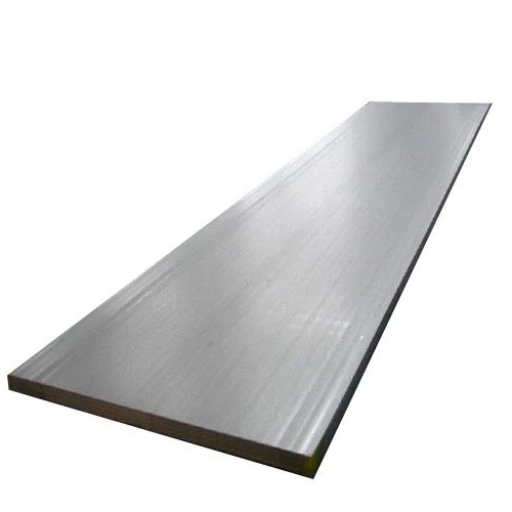
The shipbuilding sector applies EH36 steel because of its commendable mechanical properties and performance in a corrosive marine environment. Its striking yield and tensile strength ensure structural loads are maintained in rough conditions. In contrast, its remarkable impact resistance at low temperatures makes it suitable for extreme or arctic conditions. Its strength, weldability, and ability to endure construction enhance the simplification of the construction processes, guaranteeing the reliability and durability of the components and hulls of the ship. Because of these reasons, EH36 steel is preferred for constructing strong and efficient vessels, which need to endure harsh nature.
Benefits of EH36 in Marine Equipment
EH36 steel benefits marine equipment, as it possesses high strength and durability to withstand extreme conditions. The material’s exceptional weldability aids the fabrication and maintenance processes, saving financial resources and downtime. The steel’s ability to endure harsh weather and corrosion from the sea makes it a great candidate for long-term marine use.
The Role of EH36 in Offshore Structures
The finest level of strength, toughness, and dependability required to withstand harsh conditions is provided by EH36, which plays a particular role in offshore structures. Its yield strength (minimum 355 MPa) and tensile strength (490-620 MPa) guarantee the integrity of platforms, rigs, and support vessels under severe stress, ensuring structural strength. Besides, EH36’s notch toughness at chilling temperatures, typically around -40 degrees celcius, is enough to guarantee protection against fractures in deepsea battles. Furthermore, this grade of steel has weldability ease, enabling simple construction and repair in offshore projects, leading to the structures’ prolonged usage life and significantly lowering seawater’s impact. EH36 is unreplaceable in confirming safety and efficiency in offshore operations.
How Does EH36 Steel Grade Compare to AH36 and DH36?
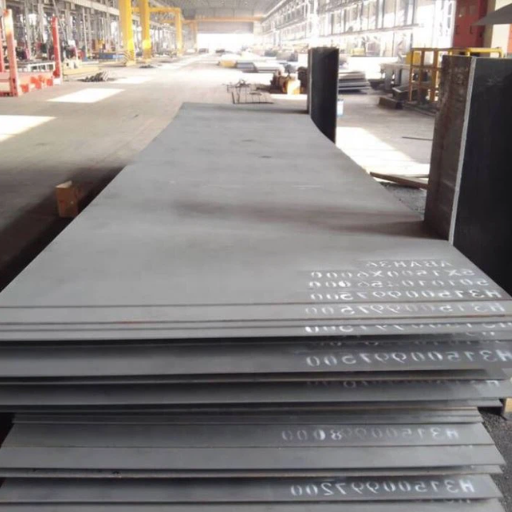
EH36, along with AH36 and DH36, which all make parts of the HSLA family steels that are used in shipbuilding and offshore structures, differ in their performance of toughness and temperature. EH36 is unlike the others, making it exceptional because of its notch toughness, which is tested at -40 degrees, driving it to be the most suitable steel in deep ocean chilly temperatures. AH36 has the lowest level of toughness, which iss ideal for moderate temperatures, while DH36 is tougher than AH36 and can endure colder regions. While all three grades share similar strength characteristics, there is a striking difference.
Key Differences Between EH36 and AH36
- Toughness: AH36 steel is less tough because it was tailored to moderate conditions. On the other hand, notch toughness is superior in EH36 steel, enabling its use in extreme cold conditions and deep sea environments. Strength: Not all steels maintain strength at higher temperatures. AH36 is one of those steels whose efficiency significantly diminished at higher temperatures. At the same time, EH36 has been proven to perform efficiently at -40 degrees Celsius.
- Temperature Resistance: As previously noted, undue temperatures can harm certain metals. AH36 does not cater to these conditions, while EH36 is more thermally resistant and has been specially tested to ensure reliability in extremely low-temperature regions.
- Applications: Along with its use in moderate shipbuilding, AH36 is commonly used in general marine projects. However, in extremely demanding marine environments, with crucial structural component durability and resilience under highly harsh conditions available, EH36 is preferred.
- Cost and Availability: Applying materials with narrower availability windows is bound to increase their costs. Due to specialization, EH36 is expected to be more expensive than the more widely available AH36.
Comparing EH36 with DH36 for Shipbuilding Applications
In terms of strength and operating environment, the differences between EH36 and DH36 in shipbuilding construction are that EH36 has greater tensile strength and is tailor-made for extreme operating environments; it is suitable for critical structural components that are exposed to extreme marine conditions. DH36 is also considered high-strength steel but is primarily used in less demanding operating environments where extreme durability is not as essential. Both are very useful in welding and shipbuilding construction; however, if resistance is needed in severe environmental and mechanical challenges, EH36 is the best fit. In terms of cost, due to having more properties, EH36 is mostly more costly.
What Are the Certification Standards for EH36 Steel?

To guarantee the quality and performance of EH36 steel in critical applications, it must comply with set certification requirements. These standards are usually set by classification societies such as the American Bureau of Shipping (ABS), Lloyd’s Register (LR), and Det Norske Veritas (DNV), among others. Certification covers the steel’s mechanical properties, such as tensile strength and toughness, weldability, and chemical composition. Meeting these standards ensures EH36 steel will withstand extreme stress and harsh marine environments.
Understanding ABS EH36 Certification
Meeting numerous technical requirements is necessary for alloy steel to obtain the ABS EH36 certification for marine use.
- Tensile Strength: 490-620 MPa (megapascals), demonstrating the ability to endure high stress without failing.
- Yield Strength: Minimum of 355 MPa, granting the steel exceptional resistance to melting under extremely high loads.
- Elongation: A minimum of 21 % in 200 mm or 24 % in 50 mm indicates good ductility, which is necessary for structural flexibility.
- Impact Toughness: Minimum impact energy of 34 Joules when tested at -40°C, ensuring that materials remain rigid and resilient under sub-zero temperatures.
- Chemical Composition (Maximum Allowable Limits)
- Carbon (C) 0.18%
- Manganese (Mn) 1.6%
- Phosphorus (P) 0.035%
- Sulfur (S) 0.035%
- Silicon (Si) 0.10-0.50%
These parameters are policed by meeting the standards set for shipbuilding and offshore structures. They are tackled through tensile testing, chemical composition analysis, and Charpy V-notch impact tests, which calculate the quality and durability of the steel in regard to its reliability for use in construction.
The Role of ASTM A131 in EH36 Steel Quality
The ASTM A131 standard further defines and assists in maintaining the EH36 steel quality by setting forth mechanical and chemical requirements that need to be fulfilled, ensuring that the material will be appropriate for the marine and offshore industry where there is a need for very high strength and toughness. ASTM A131 establishes a minimum yield strength of 51 ksi (355 MPa) and a tensile strength of 71-90 ksi (490-620 MPa). Moreover, the standard describes the required amount of elongation that must be exhibited to ensure ductility and not brittle failure.
The requirements for the chemical composition of materials under the ASTM A131 standard coincide with those of the ABS standards, which also focus on low permissible values of phosphorus and sulfur (0.035% max each). Control values for carbon (max 0.18%), manganese (1.4%-1.6%), silicon (0.10%-0.50%), and other elements are allowed. These values aid in determining the performance and reliability of the material in extreme conditions, therefore setting the requirements within the ASTM A131 makes it a keystone document for the production and certification of EH36 steel.
How Does EH36 Steel Plate Perform Under Impact?
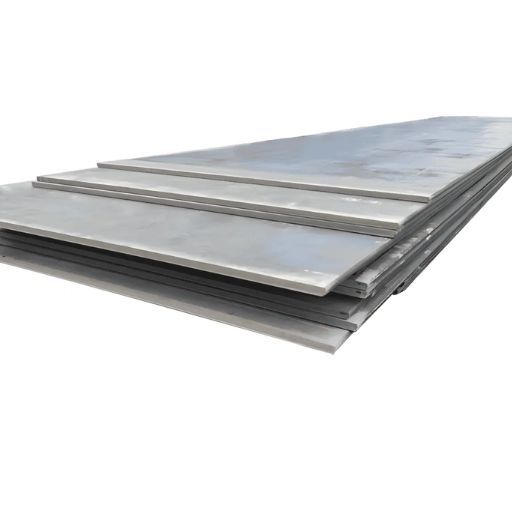
EH36 steel plate has remarkable impact properties, especially at low temperatures. It has mitigated brittle fractures because of fine-grain rolling and advanced processed techniques. Besides, the structure is subjected to stringent Charpy V-notch testing for impact energy absorption to ensure integrity and safety in severe weather conditions, including arctic regions and offshore locations.
Impact Toughness of EH36 Steel Plates
The impact toughness of EH36 steel plates is vital for their use in harsh environments. Due to their fine-grain structure and rigorous testing, they have been shown to perform in extreme conditions. Controlled processing techniques and Charpy V-notch testing guarantee that EH36 steel plates provide reliable impact energy absorption, which makes them ideal for arctic engineering and offshore structures.
Testing EH36 for Offshore Conditions
Assessing EH36 steel plates intended for offshore application includes checking if their mechanical properties can survive in harsh marine environments. The following technical parameters must be observed while testing:
- Tensile Strength: The plates must display a tensile strength of 490-620 MPa to guarantee that operational loads will not cause failure.
- Yield Strength: The yield strength must be at least 355 MPa to assure safety under structural load.
- Charpy Impact Values: Testing is conducted at low temperatures of up to negative forty degrees Celsius to check if the plates can absorb impact energy in offshore and arctic conditions. Usually, the targets for energy absorption are 27 joules and above.
- Corrosion Resistance: EH36 plates are checked for resistance to saltwater corrosion to ensure durability when exposed to marine environments.
- Weldability: Thorough checks are made to ensure that the plates can be welded without defects like cracking or loss of strength.
These assessments guarantee that EH36 steel plates will be safe and reliable for use in offshore structures subject to dynamic forces and extreme weather conditions.
References
- EH36 Grade Shipbuilding Steel – Metals USA: Provides details on the strength and durability of EH36 steel, commonly used in heavy-duty vessels.
- AH36, DH36, EH36 High Strength Shipbuilding Steel Plate – Octal Metals: Discusses the impact force and temperature resistance of various grades, including EH36.
- ASTM A131 / ABS AH36 / ABS DH36 / ABS EH36—Trinity Products offers technical specifications for EH36 steel, such as yield and tensile strength.
Frequently Asked Questions (FAQ)
Q: What is EH36 steel, and why is it considered the backbone of high-strength shipbuilding?
A: EH36 steel is a high-strength shipbuilding steel with excellent strength and durability, making it essential for constructing ship hulls and offshore structures. It is known for its high tensile strength and ability to withstand harsh marine environments.
Q: How do the impact properties of EH36 steel contribute to its performance in shipbuilding?
A: The impact properties of EH36 steel are crucial for its performance in shipbuilding as they ensure the material can absorb energy during collisions or impacts, maintaining structural integrity and safety in low-temperature environments.
Q: How does EH36 steel compare to other grades like ABS AH36 and ABS DH36?
A: EH36, like AH36 and DH36, is a high-strength shipbuilding steel plate. It offers a specified minimum yield strength of 51 ksi, providing greater strength and excellent performance, especially in demanding marine applications.
Q: What role does thickness play in applying EH36 steel in ship construction?
A: Thickness is critical in EH36’s application as it determines the steel plate’s ability to support structural loads. Thicker plates are typically used in areas requiring additional strength and durability.
Q: What is the significance of EH36 steel’s carbon content?
A: The carbon content in EH36 steel contributes to its high strength and tensile properties, making it suitable for the structural demands of shipbuilding and offshore platforms.
Q: Why is EH36 preferred for offshore steel plate applications?
A: EH36 is preferred for offshore steel plate applications due to its high strength, excellent impact properties, and ability to withstand challenging marine and offshore environments.
Q: How does welding affect the performance of EH36 steel in shipbuilding?
A: Welding is a crucial process in shipbuilding, and EH36’s composition allows for practical welding without compromising its structural integrity, ensuring strong, durable joints in ship construction.
Q: What specifications does EH36 meet, according to the American Bureau of Shipping (ABS)?
A: EH36 meets the specifications set by the American Bureau of Shipping for high-strength shipbuilding steels, adhering to stringent quality and performance standards required for maritime applications.
Q: Can EH36 steel be used in applications other than shipbuilding?
A: Yes, while EH36 is primarily used in shipbuilding, its high strength and durability make it suitable for other structural applications such as offshore platforms, barges, and other marine structures.
Q: How does the minimum specified yield strength of EH36 impact its usage in construction?
A: EH36’s minimum specified yield strength ensures that it can withstand significant loads and stresses during construction, making it a reliable choice for high-stress applications in ship and offshore structure construction.

